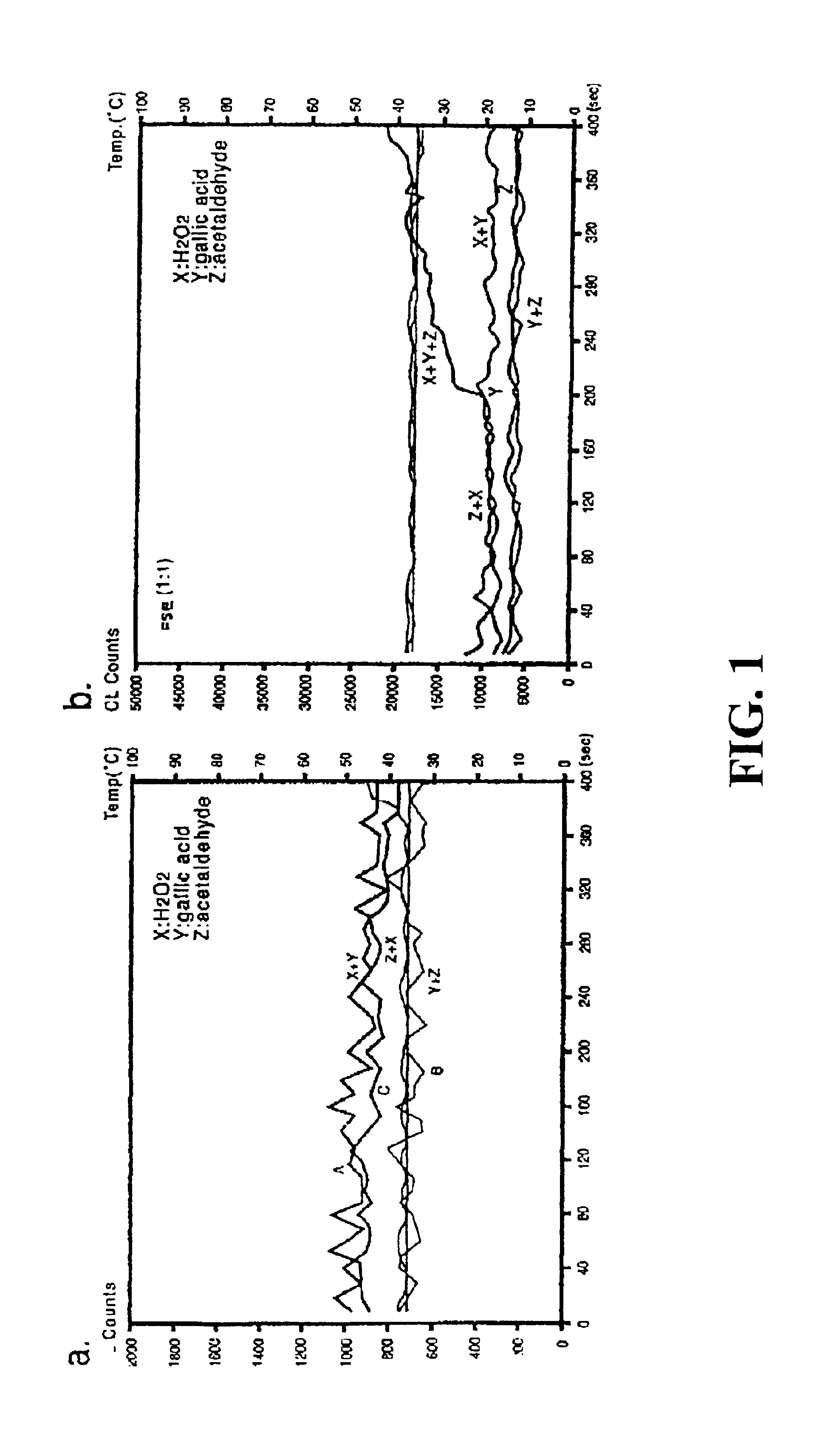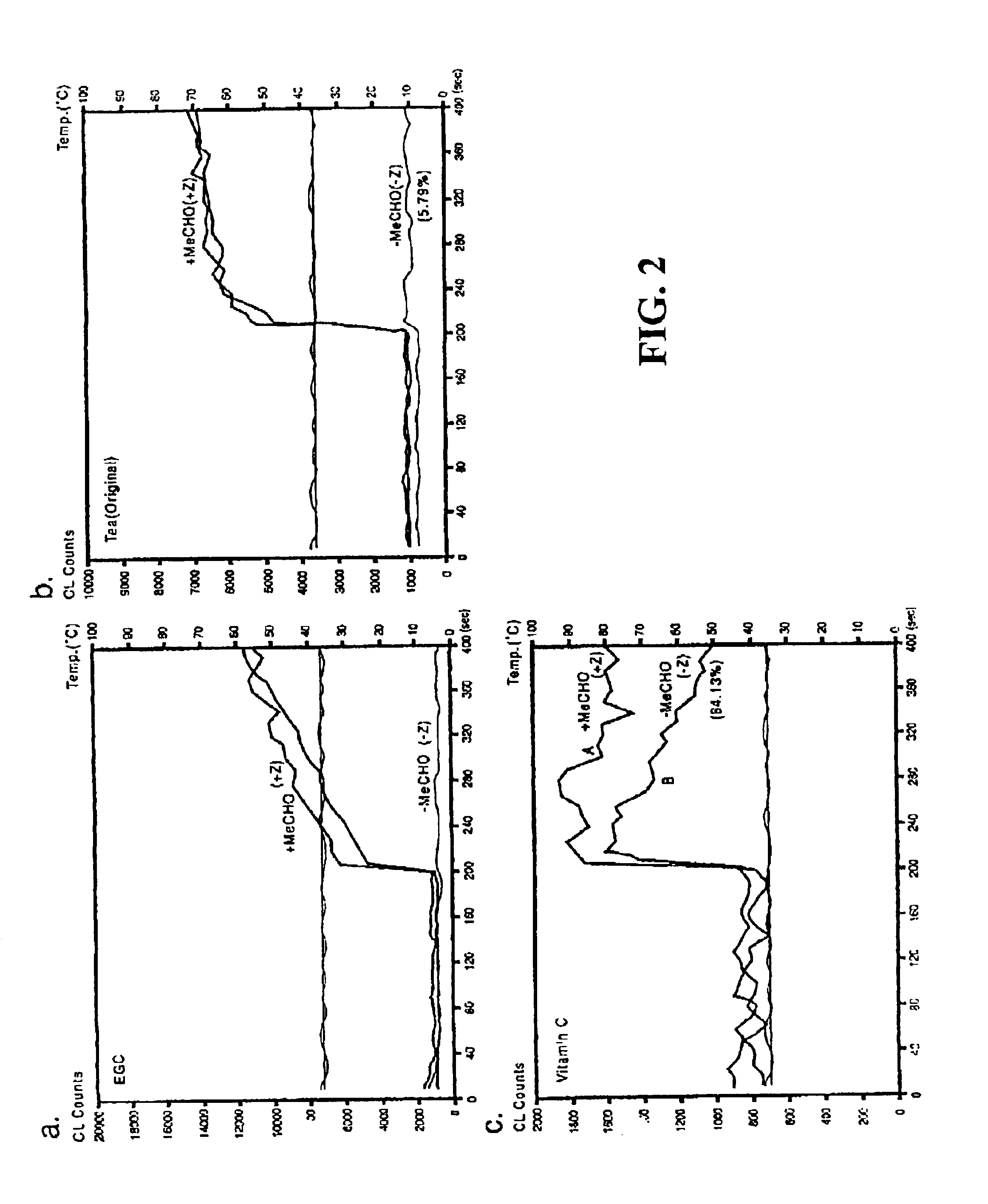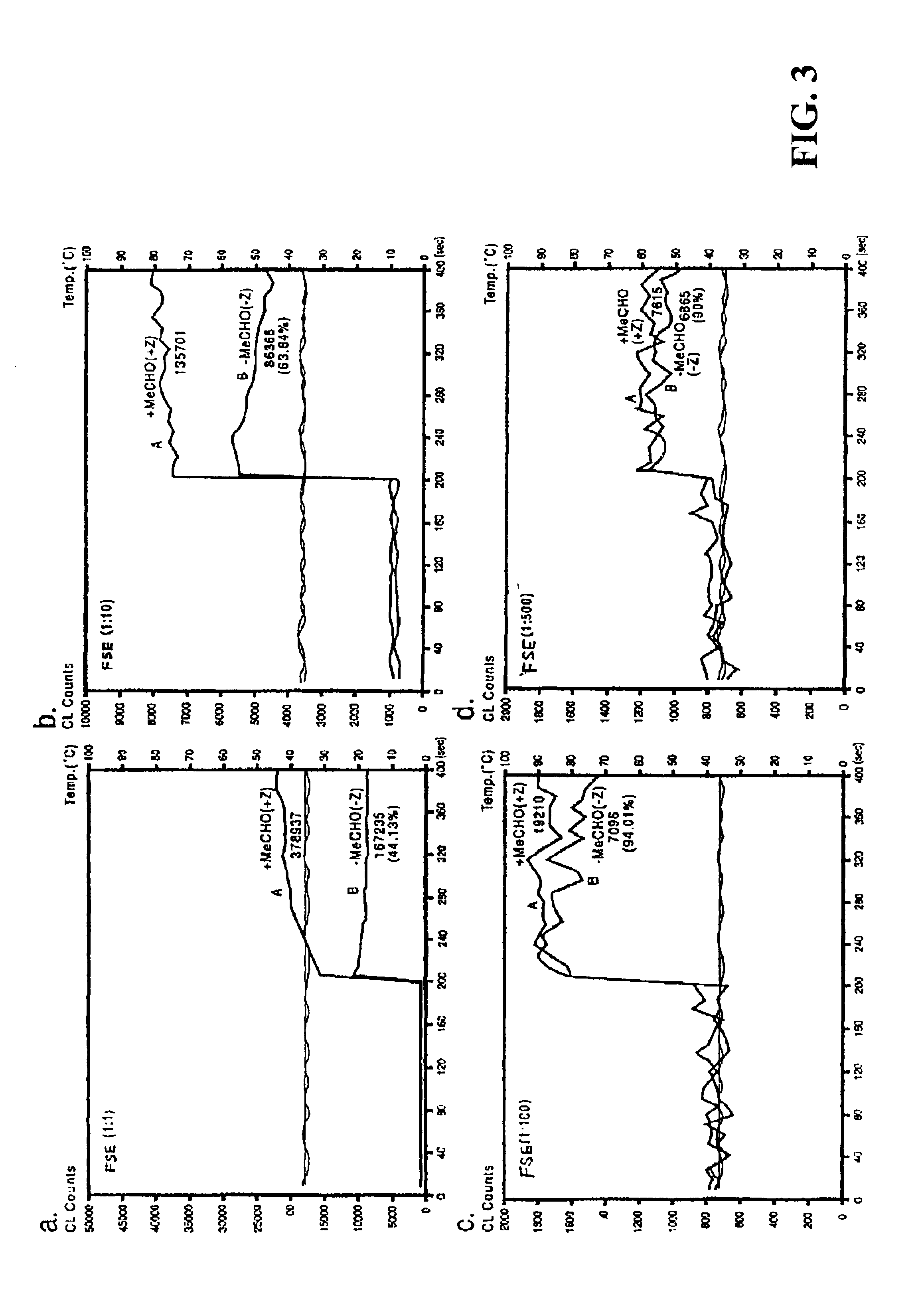Methods for inhibiting cancer growth, reducing infection and promoting general health with a fermented soy extract
- Summary
- Abstract
- Description
- Claims
- Application Information
AI Technical Summary
Benefits of technology
Problems solved by technology
Method used
Image
Examples
example 1
The fermented soy extract functioned as an antioxidant and in the removal of free radicals. Several models published previously were used to study the antioxidant capacity of the fermented soy extract, with Vitamin C and Trolox used as positive controls. The following methods were used for determining the antioxidant activity: (1) NBT method (2) H2O2 reduction method (3) DPPH reduction (4) TRAP reduction method (5) Conjugated diene (6) Lipid peroxidation (7) Chemiluminescence (FIG. 1, FIG. 2, FIG. 3) in the presence of active oxygen. All results demonstrated that the fermented soy extract has the highest antioxidant activity against unsaturated fatty acid and peroxidation compared with Vitamin C and Trolox.
Experiments demonstrated that the fermented soy extract functions both as a antioxidant and free radical acceptor in the Okubo test system for chemiluminescence acceptor in the presence of active oxygen. The experiments were performed by measuring chemiluminescence in a liquid of ...
example 2
A human breast cancer cell line MCF-7 (ATCC HTB-22) was used to study the anti-cancer activity of the fermented soy extract. The cytotoxic effects of the fermented soy extract was demonstrated in the cancer cell line (see FIG. 4). Compared with the control group of each cell, the value of fermented soy extract treatments was then normalized to reflect cell viability. The result showed that treatment with fermented soy extract at various concentrations (0.8 mg / ml, 1.6 mg / ml, 3.2 mg / ml, 8 mg / ml, 16 mg / ml) for 48 hours caused significant reduction in the viability of MCF-7 cells.
Experiments conducted show that strong cytotoxic activities on breast (MCF7), lung (H460) and liver (Hep G2) cell lines were detected at low (0.8 mg / ml) concentration of the fermented soy extract. Maximal cytotoxicities of cervix (HeLa) and lung (H1299) cancer cells were achieved at 3.2 mg / ml, whereas kidney (293) and colon (HT-29) cells were at 8 mg / ml. Among the cell lines tested, MCF-7 (breast cancer cell li...
example 3
The fermented soy extract was diluted with distilled water to make a 2% solution. Severe combined immune deficiency (SCID) female mice were transplanted with MCF-7 cells via a subcutaneous injection of 1×107 MCF-7 cells into the dorsal side of the mouse (this day was denoted as day 1). Estradiol benzoate was injected subcutaneously weekly at a dose of 50 ug / mouse for 4 weeks. The SCID mice were administered daily with a carrier or 2% fermented soy extract by oral gavage in a dosing volume of 10 ml / kg body weight for 7 days before tumor cells implantation and then daily for 41 days after tumor cells implantation (the dose of 10 ml of the 2% solution per kg body weight was equivalent to a dose of 0.2 ml of the fermented soy extract in the concentrated form per kg body weight). The tumor size, body weight, and the signs of overt animal toxicity after fermented soy extract treatment were observed and recorded. According to the results obtained (see FIG. 6), the fermented soy extract sig...
PUM
 Login to View More
Login to View More Abstract
Description
Claims
Application Information
 Login to View More
Login to View More - R&D
- Intellectual Property
- Life Sciences
- Materials
- Tech Scout
- Unparalleled Data Quality
- Higher Quality Content
- 60% Fewer Hallucinations
Browse by: Latest US Patents, China's latest patents, Technical Efficacy Thesaurus, Application Domain, Technology Topic, Popular Technical Reports.
© 2025 PatSnap. All rights reserved.Legal|Privacy policy|Modern Slavery Act Transparency Statement|Sitemap|About US| Contact US: help@patsnap.com



